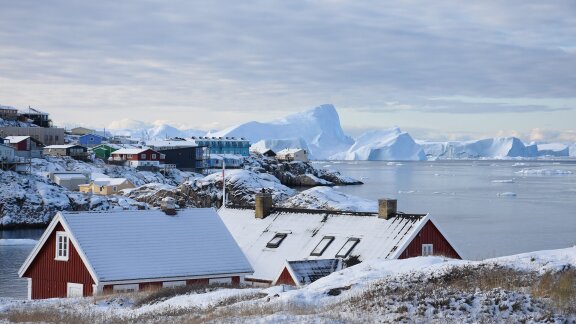Aker Solutions Explores First-of-a-Kind Engineering Solution to Slow Melting of Glaciers
December 12, 2022
Scientific discussions on how to slow the melting of the Greenland ice cap, through a physical barrier, were the focus of the three-day workshop attended by Aker Solutions. The seminar was organized by the University of the Arctic (UArctic), which is a network of universities, colleges, research institutes, and other organizations concerned with education and research in and about the North.
The UArtic seminar was arranged to facilitate discussions of a suggested seabed anchored curtain, which could be designed and provided jointly by the team of scientists, governments and two leading commercial collaborators, Aker Solutions and UK based Arup Group. Given financing for this pioneering project, Aker Solutions is prepared to assist the first phase with project management and to contribute to the needed feasibility studies.
Marianne Hagen, executive vice president and head of sustainability, HSSE and communications, led a team of engineers from Aker Solutions’ energy consulting business. The team included Dorthe Kirkeby, vice president of floaters and marine technology, and Ole Wroldsen, expert on structural design and analysis. Together they contributed with Aker Solutions expertise from conducting feasibility studies and front-end engineering consultancy, in addition to experience of building solid structures in deep water and under harsh arctic conditions.
“This is a great opportunity to challenge our brightest heads and contribute with our extensive experience from the energy industries. In collaboration with leading scientists in the field and led by the ethos of ‘do no harm’, we see a potential groundbreaking environmental project that has the potential to make a large impact on slowing the ice from melting, thereby preventing sea level rise with its wide-ranging consequences,” said Hagen.
Marianne Hagen and Ole Wroldsen in Island, providing Aker Solutions engineering expertise on how to stop warm seawater from melting the ice in Greenland and other polar areas.
On the challenge of slowing the melting of glaciers, specifically pertaining to the flow of warm seawater to the Greenland glaciers, the scientific community under the leadership of Professor John Moore, chair of the UArctic Thematic Network on Frozen Arctic Conservation, has reached the stage of involving commercial partners to evolve the project to the feasibility and implementation phases. The concept of the seabed curtain is to slow the flow of warm water contributing to the melting of the ice cap, which threatens communities with rising sea levels.
“Throughout the process, consultations with international governments, engineering businesses, and scientists invariably identified Aker Solutions as the leading partner, due to its competencies within complex, large scale constructions in both deep oceanic and arctic environments. We are excited to leverage their expertise towards this important initiative to delay or stop an emerging climate change tipping point,” said Lars Kullerud, president of UArctic.
Aker Solutions’ consulting business offers a comprehensive set of services throughout the asset lifecycle, from project framing and feasibility studies, through to "owner's engineering" and operational optimization.
“Our new consulting service can address many aspects of the energy transition. This is an example of how our excellent people, equipped with our data and tools, can be integral to solving such major challenges,” says Roddy MacPherson, recently appointed senior vice president of Aker Solutions’ consulting business.